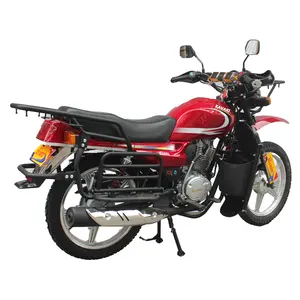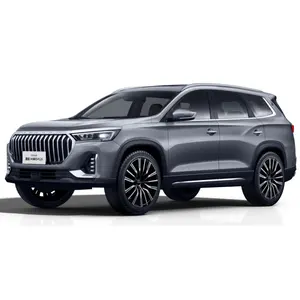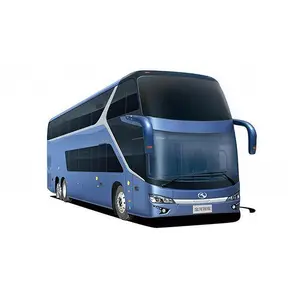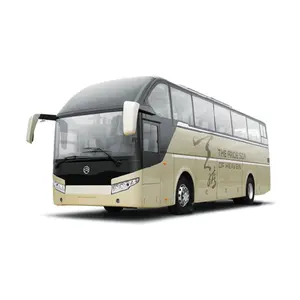Phổ biến trong ngành của bạn




Xe Tải Và Dolly Chuyển Đổi 2 Trong 1 Uni-silent 90kgs, Xe Đẩy Bằng Nhôm Có 2 Bánh Xe Xoay FHT90A
23,50 US$ - 26,00 US$
Đơn hàng tối thiểu: 50 Cái



Xách tay 4 bánh xe gấp Wagon giỏ hàng thêm lớn phổ biến cắm trại ngoài trời bãi biển Xe đẩy Wagon với điều chỉnh xử lý
32,80 US$ - 64,00 US$
Đơn hàng tối thiểu: 1 Cái







Bán Hot Xách Tay Thủy Lực Xe Định Vị Jack Lift 4 Bánh Xe Dolly
30,00 US$ - 80,00 US$
Đơn hàng tối thiểu: 4 Bộ




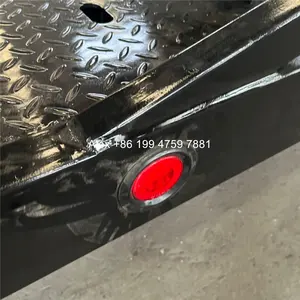


8 tấn jerrdan nghiêng người phá hủy giường để kéo thiết bị nặng
11.500,00 US$ - 12.000,00 US$
Đơn hàng tối thiểu: 1 Đơn vị







Xưởng di động 1 2 3 5 8 10 15 20 tấn nhỏ một khung cần cẩu di động 1 tấn
100,00 US$ - 2.200,00 US$
Đơn hàng tối thiểu: 1 Bộ







Thực phẩm xe trailer giỏ hàng lạnh thực phẩm Trailer nhượng Bộ thực phẩm Trailer
2.600,00 US$ - 3.000,00 US$
Đơn hàng tối thiểu: 1 Bộ






2020 Thức Ăn Đường Phố Bán Hàng Tự Động Giỏ Hàng Di Động Nhà Bếp Xe Với Carritos Para Thực Phẩm Xe Tải
4.500,00 US$ - 4.600,00 US$
Đơn hàng tối thiểu: 1 Bộ






Xe Bán Thức Ăn Di Động Tùy Chỉnh Xe Bán Trái Cây Kem Xe Bán Trái Cây Và Rau Quả
3.080,00 US$ - 3.580,00 US$
Đơn hàng tối thiểu: 1 Bộ






Hoàn Thành tùy chỉnh Trailer xe phía sau kéo di động phục vụ nhượng bộ dễ thương Thanh Nhà hàng đặt nhà cung cấp giỏ hàng
3.870,00 US$ - 4.050,00 US$
Đơn hàng tối thiểu: 1 Bộ






600lb có thể điều chỉnh Trailer Dolly cho xe Tow bán thuyền du thuyền Trailer tay Dolly Hướng dẫn sử dụng Trailer mover Heavy-Duty Tow Dolly
24,00 US$ - 25,00 US$
Đơn hàng tối thiểu: 100 Cái





Điện Thoại Di Động Hot Dog Giỏ Ra Cửa Phục Vụ Thức Ăn Trailer Với Tow Bar
2.600,00 US$ - 15.000,00 US$
Đơn hàng tối thiểu: 1 Bộ






New Ice Cream Xe Burger Van Trang Bị Nhà Hàng Caravan Di Động Thức Ăn Nhanh Xe Tải Đường Phố Ngoài Trời
3.000,00 US$ - 4.000,00 US$
Đơn hàng tối thiểu: 1 Bộ






Kéo Châu Âu Úc NZ Ngoài Trời Foodtruck Theo Dõi Nước Giải Khát Nhà Bếp Đường Phố Di Động Thanh Trạm Thực Phẩm Xe Trailer
3.830,00 US$ - 4.800,00 US$
Đơn hàng tối thiểu: 1 Đơn vị






Camper off road Trailer du lịch phục vụ xe di động thiết kế nhà nhượng bộ cắm trại xe tải
11.000,00 US$ - 15.000,00 US$
Đơn hàng tối thiểu: 1 Bộ






Nhà Để Xe Thép Di Động Heavy Duty Stacker Xe Đặt Thép 1000LBS Công Suất Sửa Chữa Chỗ Ngồi Xe Kéo Lốp Lốp Bánh Xe Dolly
25,00 US$ - 30,00 US$
Đơn hàng tối thiểu: 200 Cặp






2024 5M Kích Thước Lớn Cà Phê Và Kem Thực Phẩm Xe Tải Di Động Thực Phẩm Xe Ice Cream Thực Phẩm Van Cho Bán Châu Âu
8.300,00 US$
Đơn hàng tối thiểu: 1 Bộ






Xe Bán Hàng Di Động Xe Buýt Nhỏ Xe Điện Bốn Bánh Bán Hàng Di Động Xe Gian Hàng Snack Xe Sữa Trà Tráng Miệng Gian Hàng Xe Ô Tô
3.750,00 US$ - 3.998,00 US$
Đơn hàng tối thiểu: 1 Bộ






Xe Làm Kem Mới Xe Burger Xe Tải Chở Thức Ăn Nhanh Di Động Cho Nhà Hàng Xe Tải Đường Phố Ngoài Trời
3.000,00 US$ - 4.000,00 US$
Đơn hàng tối thiểu: 1 Bộ






Nhà để xe Trần núi lưu trữ xe đạp kéo hệ thống ròng rọc cho kayak hoặc xe đạp
4,99 US$ - 6,99 US$
Đơn hàng tối thiểu: 10 Cái






Xe Kéo Nhà Bếp Di Động Xe Tải Nhà Hàng Trên Bánh Xe Xe Thực Phẩm Xe Tải Pizza Usat Vend Popsicle Xe Bán Hàng Tự Động
710,00 US$ - 790,00 US$
Đơn hàng tối thiểu: 2 Cái






Tủ Đông Thực Phẩm Điện Xe Tải Trailer Kiosk Nhanh Vintage Xe Pickup Bếp Mini Di Động Cà Phê Giỏ Hàng Để Bán
4.000,00 US$ - 4.500,00 US$
Đơn hàng tối thiểu: 1 Bộ






Mới kem xe Burger van trang bị Nhà hàng Caravan di động thức ăn nhanh xe tải đường phố ngoài trời
3.000,00 US$ - 4.000,00 US$
Đơn hàng tối thiểu: 1 Bộ






Thương Hiệu Nhà Kính Ghế Điện Truy Tìm Công Cụ Kéo Kéo 1.5 Tấn Làm Vườn Máy Kéo Kéo Để Bán
3.000,00 US$ - 7.000,00 US$
Đơn hàng tối thiểu: 1 Bộ






Điện thoại di động video giỏ hàng có thể kéo tùy chỉnh kích thước xuất hiện đường phố tiện lợi chế biến thực phẩm xe di động nhà bếp
1.900,00 US$ - 2.800,00 US$
Đơn hàng tối thiểu: 1 Bộ






Xe tải thực phẩm nhỏ nhỏ với thiết bị nhà bếp hoàn chỉnh để kéo, Xe ăn, cà phê, trà sữa và xe bán đồ uống
5.000,00 US$ - 12.000,00 US$
Đơn hàng tối thiểu: 1 Cái






Sơn đông Phê Duyệt 3 bánh xe thực phẩm điện xe tải thực phẩm di động giỏ xe
3.100,00 US$ - 3.450,00 US$
Đơn hàng tối thiểu: 1 Bộ






Có thể điều chỉnh Heavy Duty thép bền Trailer Dolly tay Dolly Hướng dẫn sử dụng Trailer mover Heavy-Duty Tow Dolly
24,00 US$ - 25,00 US$
Đơn hàng tối thiểu: 100 Cái






Kéo Boutique Trailer điện hoàn toàn mở cửa đi bộ trong bán hàng tự động dịch vụ bán hàng Ice Cream nước giải khát giỏ hàng Trailer cho bán
3.870,00 US$ - 4.050,00 US$
Đơn hàng tối thiểu: 1 Bộ






Tùy Chỉnh Hot Dog Bánh Pizza Bánh Hamburger Xe Ice Cream Cà Phê Thức Ăn Nhanh Xe Tải Van Cho Bán
5.000,00 US$ - 8.000,00 US$
Đơn hàng tối thiểu: 1 Đơn vị






Điện thu hoạch Xe đẩy nông nghiệp nhà kính Tow tug tugs máy kéo
4.000,00 US$ - 60.000,00 US$
Đơn hàng tối thiểu: 1 Bộ






Tùy chỉnh Chuyên Nghiệp thực phẩm giỏ hàng nhượng quyền thương mại philippines kiosk thực phẩm vận chuyển xe cho bán
1.800,00 US$ - 5.000,00 US$
Đơn hàng tối thiểu: 1 Bộ






Tow xe Hot Dog giỏ hàng nấu ăn nhượng Bộ tùy chỉnh Nồi chiên vỉ nướng Hot Dog máy cổ điển giỏ hàng để bán
1.900,00 US$ - 2.200,00 US$
Đơn hàng tối thiểu: 1 Bộ






Đan Mạch Xe Đẩy Heavy Duty Flower Pot/Bucket Doanh Thu Logistic Xe Đẩy Với Tow Bar CC Cán Container Hoa Rack Với Bánh Xe
30,00 US$ - 50,00 US$
Đơn hàng tối thiểu: 100 Cái



1000A cầm tay điện kéo kéo quy tắc tùy chỉnh với 3000kg Max kéo công suất nhà kính Máy kéo
3.000,00 US$ - 7.000,00 US$
Đơn hàng tối thiểu: 1 Bộ






Tất cả các điều kiện mới Trailer kèm theo tùy chỉnh kéo giỏ hàng bán hàng tự động nhà hàng thực phẩm giỏ hàng để bán
2.750,00 US$
Đơn hàng tối thiểu: 1 Đơn vị



1000A cầm tay điện kéo kéo quy tắc tùy chỉnh với 3000kg Max kéo công suất làm vườn máy kéo
3.000,00 US$ - 7.000,00 US$
Đơn hàng tối thiểu: 1 Bộ






Cửa hàng Trailer Tow xe di động container ngựa giỏ hàng ngoài trời bán hàng tự động 7ft mini bar đồ uống Xe đẩy giỏ hàng ngựa Trailer cà phê thanh
3.870,00 US$ - 4.050,00 US$
Đơn hàng tối thiểu: 1 Bộ




500-1000a cầm tay điện kéo kéo quy tắc tùy chỉnh với 3000kg Max kéo công suất
3.000,00 US$ - 7.000,00 US$
Đơn hàng tối thiểu: 1 Bộ






Chuyên Airstream thực phẩm lớn xe tải 16ft 4 bánh xe giá cả phải chăng gương thép không gỉ cơ thể Tow xe tải để bán
11.100,00 US$
Đơn hàng tối thiểu: 1 Đơn vị





1000A cầm tay điện kéo kéo quy tắc tùy chỉnh với 3000kg Max kéo công suất
3.000,00 US$ - 7.000,00 US$
Đơn hàng tối thiểu: 1 Bộ
Các danh mục hàng đầu
Giới thiệu về xe kéo
Alibaba.com cung cấp các sản phẩm 13258 xe kéo. Có rất nhiều xe kéo lựa chọn dành cho bạn, chẳng hạn như nước giải khát nhà máy, thương mại phục vụ, và snack thực phẩm nhà máy. Bạn cũng có thể chọn từ thực phẩm cửa hàng, khách sạn, và nhà sử dụng xe kéo. Cũng như từ thổ nhĩ kỳ, nhật bản, và malaysia xe kéo.Và bất kể xe kéo là sữa, bột, hay rau.
